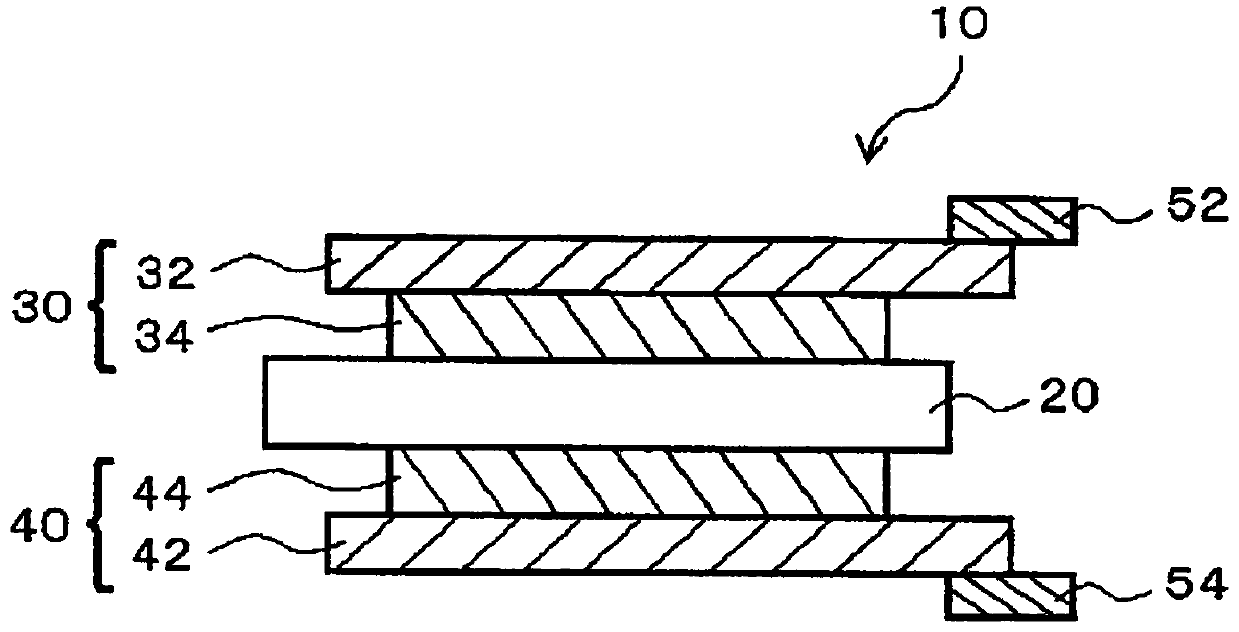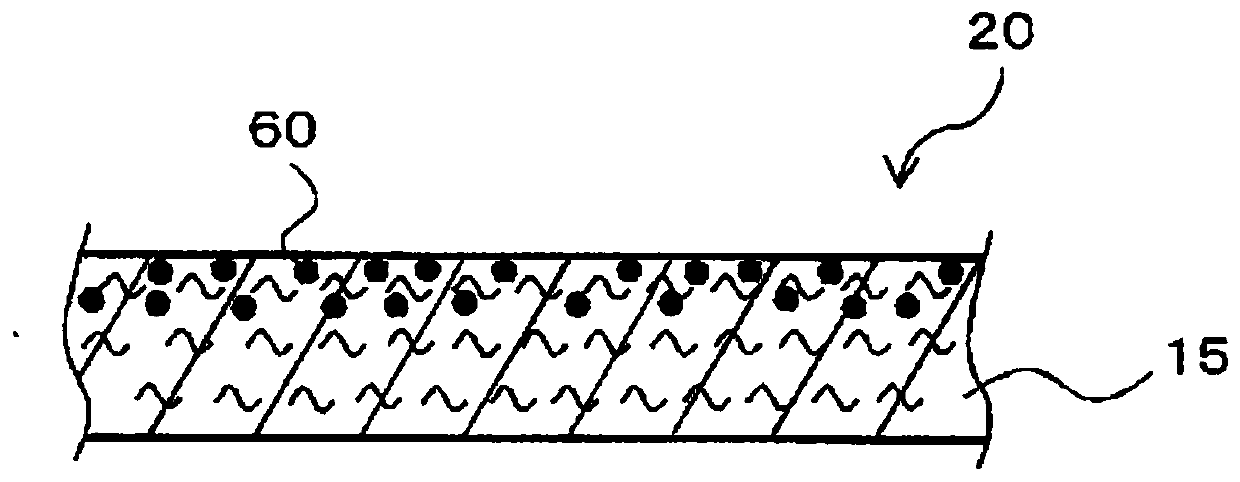Ion trapping agent, lithium ion battery separator, and lithium ion secondary battery
A technology of ion scavenger and secondary battery, which is applied in the field of ion scavenger, can solve the problems of battery characteristics (capacity reduction, etc.), and achieve the effect of suppressing the reduction of battery capacity and suppressing the deterioration over time
- Summary
- Abstract
- Description
- Claims
- Application Information
AI Technical Summary
Problems solved by technology
Method used
Image
Examples
Embodiment
[0139] Hereinafter, the disclosure of this specification will be specifically described based on examples. However, this embodiment is not limited to the following examples at all. In addition, in the following examples, % is mass %.
[0140]
[0141] (1) Moisture content
[0142] After vacuum-drying the ion trapping agent at 150°C for 20 hours, according to JIS K0113 "General Rules for Potential Difference, Current, Electricity, and Karl Fischer Titration Methods", use a Karl Fischer moisture meter MKC-710 manufactured by Kyoto Denshi Kogyo Co., Ltd., gas Chemical device ADP-611, using the Karl Fischer method to determine the moisture content.
[0143] (2) Metal ion capture capacity in the electrolyte
[0144] Assuming application to a lithium-ion secondary battery, evaluate the metal ion capture capacity in a model electrolyte solution. The specific evaluation method is as follows.
[0145] [Measurement of cobalt ion capture capacity]
[0146] For the test solution, ...
manufacture example 1
[0164] Synthesis of α-Zirconium Phosphate
[0165] After dissolving 0.272 mol of zirconium oxychloride octahydrate (manufactured by Wako Pure Chemical Industries, Ltd.) in 850 ml of deionized water, 0.788 mol of oxalic acid dihydrate (manufactured by Wako Pure Chemical Industries, Ltd.) was dissolved. While stirring the solution, 0.57 mol of phosphoric acid was added. It was stirred for 8 hours and refluxed. After cooling, the obtained precipitate was fully washed with water, and then dried at 150°C to obtain zirconium phosphate. As a result of analyzing this zirconium phosphate, it was confirmed that it contained 6.64 mmol of H per 1 g + The ions, that is, the theoretical exchange capacity of the ion exchange group is 6.64meq / g alpha zirconium (1) Zr (HPO 4 ) 2 ·H 2 O.
[0166] In addition, when the median diameter of zirconium phosphate α was measured (laser diffraction particle size distribution meter "LA-950" (model name) manufactured by Horiba, Ltd.), it was 0.9 μm...
manufacture example 2
[0168] Synthesis of Calcined Li Substituted Alpha Zirconium Phosphate (1)
[0169] 70 g of the alpha zirconium phosphate (1) obtained in Production Example 1 was added to 7000 ml of a 0.1N (mol / L) LiOH aqueous solution while stirring. After stirring this further for 8 hours, the filter was filtered and washed with water until the electric conductivity of the filtrate became 500 μS / cm or less. After washing with water, vacuum-drying at 150° C. for 20 hours, and further firing at 400° C. for 4 hours gave fired Li-substituted zirconium phosphate (1). The median particle size is 0.9 μm. The calcined Li-substituted α-zirconium phosphate (1) is ZrO with an introduction amount of Li ions of 6.78meq / g. 2 ·P 2 o 5 · Li 2 O. In addition, the lithium atoms in this composition and the phosphate group PO 4 The mass ratio (Li / PO 4 ) is 0.073. (Example 1)
PUM
| Property | Measurement | Unit |
|---|---|---|
| specific surface area | aaaaa | aaaaa |
| thickness | aaaaa | aaaaa |
| thickness | aaaaa | aaaaa |
Abstract
Description
Claims
Application Information
 Login to View More
Login to View More - R&D
- Intellectual Property
- Life Sciences
- Materials
- Tech Scout
- Unparalleled Data Quality
- Higher Quality Content
- 60% Fewer Hallucinations
Browse by: Latest US Patents, China's latest patents, Technical Efficacy Thesaurus, Application Domain, Technology Topic, Popular Technical Reports.
© 2025 PatSnap. All rights reserved.Legal|Privacy policy|Modern Slavery Act Transparency Statement|Sitemap|About US| Contact US: help@patsnap.com



